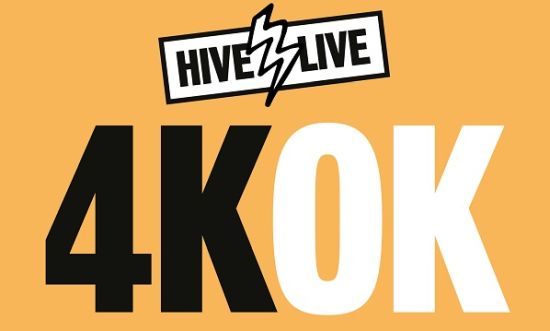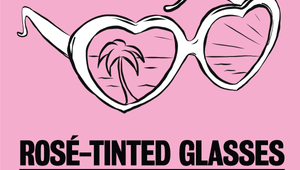
'UHD Will Be an Amazing Creative Tool for Filmmakers'

Over the past few years, Ultra High Definition hardware has been steadily trickling into the hands of filmmakers and consumers in the forms of cameras and TVs. It won’t be long until broadcasters start offering the resolution as standard. To understand how this will affect the creation and delivery of commercials, we speak to Andy Wilson, Head of Business Development at the Digital Production Partnership (DPP).
Andy has worked in broadcasting for over 16 years. He has worked on red button interactive television services, broadcast innovation and digital rights and was also Head of the BBC College of Technology, overseeing all training and development for technology for the BBC. Passionate about education and the symbiosis of art and science, most recently Andy was a Partnership Lead for BBC Make it Digital (including the BBC micro:bit), a year-long campaign to help develop the coding and digital skills of audiences across the UK. He reveals his thoughts on the future of production, UHD and what we need to know about coding.
Q> What’s your background? How did you get into TV / Media and Computer Science?
Andy Wilson> At 16, I started working on hospital radio and was very lucky to get some early experience working on one of the first interactive television services operated by a cable network in Brighton. I was exposed to the excitement of the media, and what technology could offer it, at the perfect time. I then went to study art and media. During this time, I was doing a lot of computer programming and I was convinced I was going to make my fortune making interactive CD-ROMs… but that didn’t work out! I then flirted with a career in feature films before moving across to broadcast, where I was fortunate enough to join the BBC when it was about to go online. At the BBC, I worked in Red Button television services and on new emerging platforms, including mobile - back when MMS was a thing.
Q> Broadcast tech has changed enormously over the last few years. From your experience, how has the rate of advancement in technology changed?
AW> In my view, the pace of change has certainly been increasing. During the time I’ve worked in the media, we’ve gone from looking at improving the loading times of basic web pages to seeing UHD video streamed to portable devices - It’s been quite an exciting journey.
Q> In layman’s terms what is UHD, how is it different to HD and why should we be preparing for it?
AW> There’s quite a lot of confusion between the resolutions involved and the differences between 4K, 8K, HD and UHD. Ultimately, 4K is for cinema whereas UHD is for television. There’s a very subtle difference between the two, which affects the resolution - the size - of the picture.
HD (1920 x 1080 pixels) is, as you might think, a lower resolution than UHD (3840 × 2160 pixels), although it’s not just about the resolution. There are other benefits to UHD, like a wider colour gamut and higher dynamic range, meaning a bigger colour palette to play with and much finer subtleties between light and dark. The images will be amazingly vibrant. It’s a great creative tool for programme makers and people that work in post. It will enable their creativity to shine through in a big way.
Q> When do you predict UHD is going to become commonplace in homes and businesses?
AW> There are already live sports channels offering UHD, and lots of sets in homes, but when broadcasters will adopt it as standard for all their content, including commercials, is a question for the individual broadcasters themselves.
At the DPP we’re ensuring broadcasters have the framework in place to be able to deliver UHD. We’ve been working on a programme delivery specification for some time and now we’re starting work on a commercials specification with our ad supplier members including Honeycomb, Adstream and IMD. It’s about planning for the future.
Q> How about consumers - will we need to get UHD TVs to replace HD?
AW> HD televisions can only receive HD and SD signals, so people will need to update to a UHD TV in order to receive UHD channels, but don’t worry - HD is going to around for a long time yet!
Q> Why is it important that those creating commercials are prepared for UHD broadcast now?
AW> Advertisers need to be thinking about how they want to record their material as early as possible, as that will often dictate which camera technologies and post production tools they will use. That’s where the planning comes in. You need to start thinking about the platforms you will be delivering to and what your deliverables are for that, and work backwards. A large number of commercials are mastered for cinema and then delivered to broadcasters and online platforms. That means you’ll need a camera that can record at least 2K resolutions for cinema, and more likely 4K.
At the DPP we’re looking to have the delivery specifications ready for when channels want to deliver UHD.
Q> You’re heavily involved in the educational side of computer science and coding. Is this a big passion of yours?
AW> I was involved with the BBC Make It Digital campaign and the BBC micro:bit, which the BBC gave away free to every 11-year-old in the UK. I’m also a non-executive director of a community interest company called TeenTech, which encourages and inspires children to take up careers in science, technology, engineering and maths.
Q> The current 20-30-year-old generation will probably never learn to code. Do you think we are going to have a generation in 20 years who are completely out of touch with how technology works?
AW> No, I don’t think so. From a TV perspective, we’ve seen amazing creative opportunities being brought to us by emerging online platforms like Snapchat, Facebook Live, YouTube, Instagram and so on - all using video in new ways. Whatever the technology, we will always need creative storytellers. Absolutely, we will need engineers and technologists who can build the tech of the future but we will still need visionaries, storytellers and designers for those platforms. It’s always about combining art and science.
Q> Which other tech have you got your eye on besides UHD?
AW> It’s really interesting to see how new consumer technologies impact how we work in production. For example, faster mobile speeds mean that people will be looking at how we can use 4G technology in film production. It will be interesting to see how that might change how productions work on location and how they can collaborate with other companies remotely.
We’re already seeing huge consumption of video on mobile and I think that will increase. And of course, across every sector, machine-learning and AI are going to have an increasingly important role to play.
Q> You’re speaking with Honeycomb at their new event Hive Live. What can we expect to hear there?
AW> We are going to be demystify what UHD means, how it can be used, what the workflows are and what the DPP is developing to support UHD commercial deliveries. We’ll also be exploring, the industry challenges we are hoping to solve and what UHD means for broadcasters and agencies in the future.

Learn more about future tech at Honeycomb’s first ever HiveLive event on 18th July. Andy will be speaking about everything UHD with Honeycomb’s Craig Russill-Roy. More info and free tickets here.











